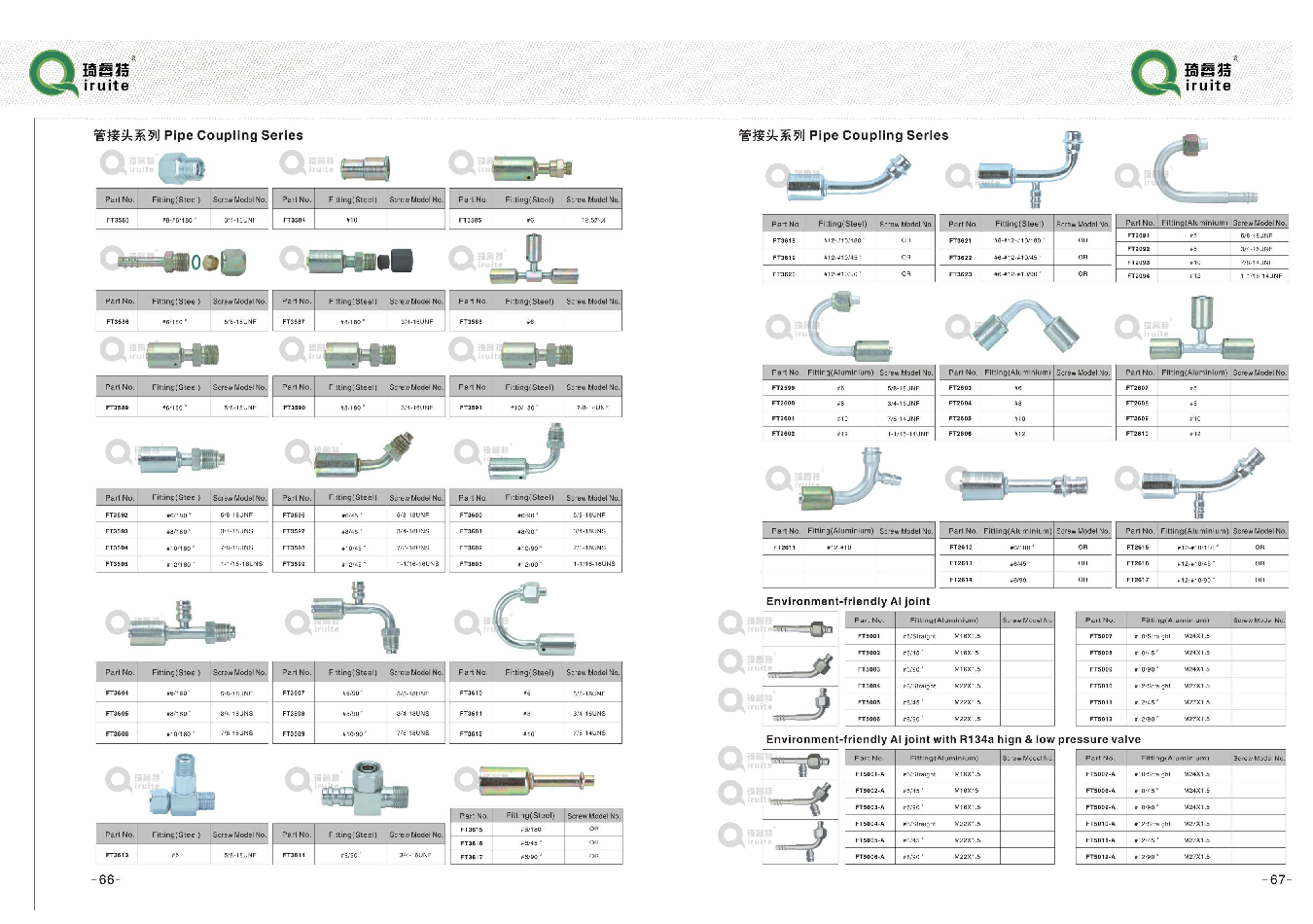automotive air conditioning tubing
Understanding Automotive Air Conditioning Tubing A Critical Component for Comfort
Automotive air conditioning systems are indispensable for providing comfort during hot weather conditions. One of the essential yet often overlooked components of these systems is the tubing that carries refrigerant and coolant throughout the vehicle. This article delves into the importance, types, and maintenance of automotive air conditioning tubing.
The Importance of Air Conditioning Tubing
The primary function of air conditioning tubing in vehicles is to transport refrigerant and refrigerant oil between the various components of the air conditioning system, such as the compressor, condenser, evaporator, and the expansion valve. The efficiency of these systems hinges on the proper functioning and integrity of the tubing. Any leaks or damage to the tubing can lead to reduced cooling performance, increased energy consumption, and potential damage to the entire system.
In essence, the quality of the tubing directly affects the overall effectiveness of the air conditioning system. Properly functioning tubing allows for the efficient transfer of refrigerant, ensuring that the system can lower cabin temperatures quickly and maintain a comfortable environment.
Types of Automotive Air Conditioning Tubing
There are primarily three types of tubing used in automotive air conditioning systems rubber hoses, metal tubes, and flexible lines.
1. Rubber Hoses These are commonly used for refrigerant lines due to their flexibility and ability to absorb vibrations. Rubber hoses generally include an internal layer to resist refrigerant diffusion, an intermediate layer for pressure reinforcement, and an outer layer that provides protection from environmental factors. While they are easy to install and replace, rubber hoses typically have a shorter lifespan than metal tubes, as they can degrade over time due to exposure to heat and chemicals.
2. Metal Tubes Metal tubing, often made of aluminum or copper, is more durable and resistant to temperature variations than rubber hoses. These tubes are usually used in high-pressure sections of the air conditioning system, such as between the compressor and the condenser. Their rigid construction prevents expansion under pressure, ensuring reliable performance over time. However, metal tubes can be harder to install, especially in tight spaces, and may require specialized tools to shape and connect them.
automotive air conditioning tubing

3. Flexible Lines These lines are designed to connect rigid sections of the air conditioning system while accommodating movement and vibration. They are often made from braided stainless steel or reinforced rubber. Flexible lines are particularly advantageous in situations where the compressor may move due to engine vibrations, as they allow for a greater range of motion while maintaining strength and integrity.
Maintenance and Inspection
Regular maintenance and inspection of air conditioning tubing can help avoid significant issues and extend the life of the entire air conditioning system. Vehicle owners should be aware of the signs of tubing failure, such as hissing sounds (indicative of refrigerant leaks), reduced cooling efficiency, and visible signs of wear, such as cracking or bulging in rubber hoses.
For preventative maintenance, it is advisable to
- Check for Leaks Regularly inspect visible tubing and connections for signs of leaks or wear. In many cases, refrigerant leaks can be detected using dye that fluoresces under UV light, making it easier to locate the source of the problem.
- Replace Worn Tubing If any tubing shows signs of wear or damage, it should be replaced promptly to prevent further issues. This is particularly crucial for rubber hoses, which degrade more rapidly than metal tubing.
- Professional Inspection It might be beneficial to have a professional mechanic inspect the air conditioning system regularly, particularly before peak usage seasons, to ensure all components, including the tubing, are functioning optimally.
Conclusion
Automotive air conditioning tubing plays a crucial role in ensuring efficient vehicle cooling systems. By understanding the types of tubing, recognizing signs of wear, and employing a routine maintenance schedule, vehicle owners can ensure their air conditioning systems provide the comfort needed during hot weather. Investing time and resources into maintaining this often-overlooked component can lead to a more reliable, economical, and enjoyable driving experience.
-
Reliable Brake Line Solutions for Your VehicleNewsJun.05,2025
-
Quick Fix for Leaky Air Conditioning HosesNewsJun.05,2025
-
Powerful Sewer Jetting Solutions for Tough ClogsNewsJun.05,2025
-
Power Steering Hose Problems SolvedNewsJun.05,2025
-
Hose Protectors That Actually WorkNewsJun.05,2025
-
Essential Hose Connectors for Every HomeNewsJun.05,2025

